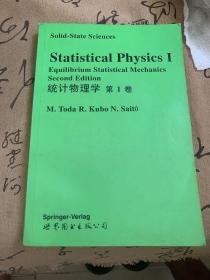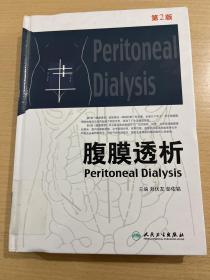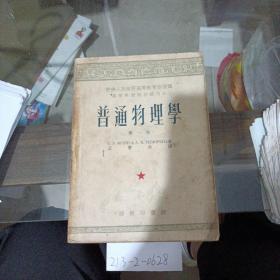
统计物理学(第1卷)(英文版)
¥ 118 八五品
仅1件
湖南长沙
认证卖家担保交易快速发货售后保障
作者N.Saito 著;M.Toda;R.Kubo
出版社世界图书出版公司
出版时间1997-09
版次1
装帧平装
货号70F
上书时间2023-09-07
- 店主推荐
- 最新上架
商品详情
- 品相描述:八五品
图书标准信息
- 作者 N.Saito 著;M.Toda;R.Kubo
- 出版社 世界图书出版公司
- 出版时间 1997-09
- 版次 1
- ISBN 9787506233958
- 定价 40.00元
- 装帧 平装
- 开本 其他
- 纸张 胶版纸
- 页数 252页
- 【内容简介】
-
The subject itself has progressed considerably in recent years, especially in relation to the theory of phase changes and various aspects of the ergodic problems. In order to include recent developments of the theory of phase changes, more than half of Chap. 4 has been rewritten. It is hoped that the inclusionof additional material will elucidate the current point of view and the new methods employed in this fascinating branch of statistical physics. Chapter 5, which is devoted to the ergodic problems, has been fully revised to present contemporary knowledge of the ergodic behavior of mechanical systems, which has been actively investigated in the last few years by means of mathematical analysis, supported by numerical computation.
The authors have also taken advantage of the opportunity to correct typographical errors, and to revise some figures. - 【目录】
-
1. General Preliminaries
1.1 Overview
1.1.1 Subjects of Statistical Mechanics
1.1.2 Approach to Equilibrium
1.2 Averages
1.2.1 Probability Distribution
1.2.2 Averages and Thermodynamic Fluctuation
1.2.3 Averages of a Mechanical System - Vidal Theorem
1.3 The Liouville Theorem
1.3.1 Density Matrix
1.3.2 Classical Liouville''s Theorem
1.3.3 Wigner''s Distribution Function
1.3.4 The Correspondence Between Classical and QuantumMechanics
2. Outlines of Statistical Mechanics
2.1 The Principles of Statistical Mechanics
2.1.1 The Principle of Equal Probability
2.1.2 Microcanonical Ensemble
2.1.3 Boltzmann's Principle
2.1.4 The Number of Microscopic States, Thermodynamic Limit
a A Free Particle
b An Ideal Gas.
c Spin System
d The Thermodynamic Limit
2.2 Temperature
2.2.1 Temperature Equilibrium
2.2.2 Temperature
2.3 External Forces
2.3.1 Pressure Equilibrium
2.3.2 Adiabatic Theorem
a Adiabatic Change
b Adiabatic Theorem in Statistical Mechanics
c Adiabatic Theorem in Classical Mechanics
2.3.3 Thermodynamic Relations
2.4 Subsystems with a Given Temperature
2.4.1 Canonical Ensemble
2.4.2 Boltzmann-Planck''s Method
2.4.3 Sum Over States
2.4.4 Density Matrix and the B!och Equation
2.5 Subsystems with a Given Pressure
2.6 Subsystems with a Given Chemical Potential
2.6.1 Chemical Potential
2.6.2 Grand Partition Function
2.7 Fluctuation and Correlation
2.8 The Third Law of Thermodynamics, Nernst''s Theorem
2.8.1 Method of Lowering the Temperature
3. Applications
3.1 Quantum Statistics
3.1.1 Many-Particle System
3.1.2 Oscillator Systems Photons and Phonons
3.1.3 Bose Distribution and Fermi Distribution
a Difference in the Degeneracy of Systems
b A Special Case
3.1.4 Detailed Balancing and the Equilibrium Distribution
3.1.5 Entropy and Fluctuations
3.2 Ideal Gases.
3.2.1 Level Density of a Free Particle
3.2.2 Ideal Gas
a Adiabatic Change
b High Temperature Expansion
c Density Fluctuation
3.2.3 Bose Gas
3.2.4 Fermi Gas
3.2.5 Relativistic Gas
a Photon Gas
b Fermi Gas
c Classical Gas
3.3 Classical Systems
3.3.1 Quantum Effects'and Classical Statistics
a Classical Statistics
b Law of Equipartition of Energy
3.3.2 Pressure
3.3.3 Surface Tension
3.3.4 Imperfect Gas
3.3.5 Electron Gas
3.3.6 Electrolytes
4. Phase Transitions
5. Ergodic Problems
General Bibliography
References
Subject Index
点击展开
点击收起
相关推荐
— 没有更多了 —



































以下为对购买帮助不大的评价